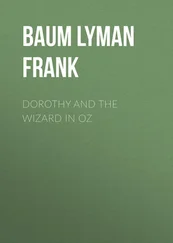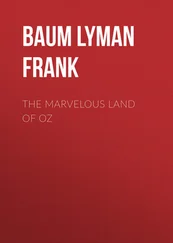Lyman Baum - The Book of the Hamburgs
Здесь есть возможность читать онлайн «Lyman Baum - The Book of the Hamburgs» — ознакомительный отрывок электронной книги совершенно бесплатно, а после прочтения отрывка купить полную версию. В некоторых случаях можно слушать аудио, скачать через торрент в формате fb2 и присутствует краткое содержание. Жанр: foreign_antique, foreign_prose, на английском языке. Описание произведения, (предисловие) а так же отзывы посетителей доступны на портале библиотеки ЛибКат.
- Название:The Book of the Hamburgs
- Автор:
- Жанр:
- Год:неизвестен
- ISBN:нет данных
- Рейтинг книги:5 / 5. Голосов: 1
-
Избранное:Добавить в избранное
- Отзывы:
-
Ваша оценка:
- 100
- 1
- 2
- 3
- 4
- 5
The Book of the Hamburgs: краткое содержание, описание и аннотация
Предлагаем к чтению аннотацию, описание, краткое содержание или предисловие (зависит от того, что написал сам автор книги «The Book of the Hamburgs»). Если вы не нашли необходимую информацию о книге — напишите в комментариях, мы постараемся отыскать её.
The Book of the Hamburgs — читать онлайн ознакомительный отрывок
Ниже представлен текст книги, разбитый по страницам. Система сохранения места последней прочитанной страницы, позволяет с удобством читать онлайн бесплатно книгу «The Book of the Hamburgs», без необходимости каждый раз заново искать на чём Вы остановились. Поставьте закладку, и сможете в любой момент перейти на страницу, на которой закончили чтение.
Интервал:
Закладка:
L. Frank Baum
The Book of the Hamburgs A Brief Treatise upon the Mating, Rearing and Management of the Different Varieties of Hamburgs
Long before what we now call “fancy fowls” were known or recognized (in fact, long before the memory of any person now living), Hamburgs were kept and bred to feather among the peasants of Yorkshire and Lancashire in England, and by them exhibited at the small town and county fairs in their neighborhood. Of course they were then known under different names, the Blacks being called “Black Pheasant Fowls” and the Spangled varieties “Lancashire Mooneys” and “Yorkshire Pheasants”; while such a variety as the Penciled Hamburgs were either wholly unknown or else were so little thought of that they have left no record of their origin, if, indeed, they are natives of England at all.
EARLY HISTORY
Mr. Wright, who has traced these fowls back still further, inclines to the belief that at some period whereof we have no knowledge the Penciled varieties formed a part of the Hamburg family, although our earliest positive knowledge traces them to direct importations from Holland, where they were brought in great numbers, and were originally known under the names of “Dutch Everyday Layers” or “Dutch Everlasting Layers.”
As such a thing as a black or spangled variety of this fowl was utterly unknown in Holland, it is presumable that at some period the penciled varieties were exported to Holland and there bred and cherished, while they were allowed to run out or sink into insignificance in England. We cling to this belief so tenaciously on account of the wonderful similitude which marks the characteristics of the Hamburg family, in spite of the fact that one branch came from Holland and the other is emphatically English. These two branches, namely, the Penciled and the Spangles and Blacks, resemble no other varieties of fowls in the slightest degree, while their common characteristics are the absence of the incubating instinct, clean, slender legs, neat rose combs, small, round and white ear-lobes, and the light, but sweeping and graceful, lines of form which are wholly their own and unapproachable by any other breed of fowls, no matter how fine their symmetry. If this were not enough to stamp them with certainty of having one origin, we mark the fact that spangled chickens are frequently penciled in their first feathers; while, as they mature, the black spangles or moons are often surmounted by a light tip beyond them, thus again approaching the penciled character, while conversely it will be found that if penciled birds be bred too dark the last bar has a strong tendency to become too wide , thus approaching a spangled character.
If we consider the utter want of interest with which poultry was regarded in the earlier days, and the fact that no traditions of any account relating to fowls have been handed down, we may be justified in believing that these facts prove our conjectures in regard to the original identity of these varieties to be correct. From whence their common progenitor came, we can have no idea, but that they did have one we strongly believe. It may have been that they came from the Blacks, as that variety is thought to be the oldest, and a cross might have resulted in the broken color, or possibly these Blacks having a number of white feathers may have been bred together until a distinctly-marked plumage had been obtained.
Bearing in mind, however, that Aldrovandus speaks of a fowl which strongly resembles the penciled variety as Gallina Turcica , it is possible that the Penciled was the original variety, and, as the name suggests, of Eastern origin.
These conjectures and hypotheses are perplexing and unsatisfactory, and are really of no practical value, being only of use in affording another instance of the fascinating problems which constantly present themselves to the poultry fancier of a philosophical and inquiring turn of mind. This much appears to be certain: that of all our many varieties of fancy fowls the Hamburg is by odds the oldest; indeed, Mr. Wingfield claims that old records show that fowls with all the Hamburg characteristics were bred in the yards of monasteries as early as the fourteenth century.
At the great Birmingham show the authorities there, recognizing the general resemblance between the Penciled, Spangled and Black varieties, and the inconvenience of their numerous and varied appellations, grouped them together under the general name of Hamburgs, by which they have been known since, fanciers accepting with alacrity a name which was at once convenient in classing the breeds and which brought the separated members of what was no doubt a distinct family together, as it is most certain they belong and should be arranged.
Many breeders who have no knowledge of the deliberations at Birmingham have been puzzled to guess why the name Hamburg should have been chosen to designate a family which was mainly English, but these “fathers of the fraternity” had too much business to transact to allow them to inquire very carefully into the early history of this fowl. The Rev. E. S. Dixon proposed “that as the penciled varieties were then imported by the Levant merchants from the port of Hamburg they should all take the general name of Hamburgs,” and, indeed, this term is as euphonious and convenient as any other could be.
CHARACTERISTICS OF HAMBURGS
In usefulness and beauty the Hamburgs stand very prominently amongst that numerous collection of fowls which our broad nomenclature denominates “fancy poultry.” The plumage of every variety, either Penciled or Spangled, Silver, Golden or Black, is at once beautiful and striking, attracting the attention of strangers to the poultry yard or exhibition room when all other breeds have failed to interest them, and drawing from them involuntary tributes of admiration. And if they are so much admired by cold and superficial observers, surely the Hamburg fancier may be pardoned for his unbounded enthusiasm for his favorites when every season and nearly every day unfolds new beauties in his birds and renders them more fascinating and delightful to his eye. The exquisite symmetry, the novel and shapely rose combs, the snowy and delicate ear-lobes, the tapering blue legs and graceful carriage give them an aristocratic and “dressed up” appearance and render them the most beautiful of our domestic fowls.
The Hamburg fancier has plenty of scope in which to indulge his taste, the different colors and markings affording an ample variety from which to choose, while the general characteristics are the same.
“Hamburgs,” says Mr. Beldon in Lewis Wright’s poultry book, “are without doubt the most beautiful breed of poultry we possess, as well as the most useful, all varieties being alike elegant and beautiful. The dweller in the country will generally prefer the Silver, while the citizen will take the Golden or Black; but all of them, in their matchless variety of marking and color, will delight the eye with the utmost degree which is perhaps possible of beauty in fowls. Their marvelous beauty, however, would not recommend the Hamburgs to the practical breeder so much as their wonderful egg-producing qualities, which it has been claimed surpass those of any other breed. The wonderful stories told of Hamburg productiveness, while often more amusing than reliable, serve to show that in any hands, in any climate and under the most adverse circumstances they have proved very profitable to their owners, while with ordinary care they are the best of layers.”
The average Hamburg pullet will begin laying at four or five months of age, and will lay from 150 to 200 eggs the first year under favorable circumstances. The second and third years hens will average from 175 to 225 eggs when properly cared for, and from the third year their productiveness gradually declines, although one reliable breeder asserts that he once owned a Black Hamburg hen which at five years of age laid 220 eggs in ten months. A great deal depends upon the strain of birds and the care they receive, as if productive traits are cherished and carefully bred for, the number of eggs may be greatly increased, while neglect to properly cultivate this quality by careless and incompetent breeders will result in a marked decrease in productiveness.
Читать дальшеИнтервал:
Закладка:
Похожие книги на «The Book of the Hamburgs»
Представляем Вашему вниманию похожие книги на «The Book of the Hamburgs» списком для выбора. Мы отобрали схожую по названию и смыслу литературу в надежде предоставить читателям больше вариантов отыскать новые, интересные, ещё непрочитанные произведения.
Обсуждение, отзывы о книге «The Book of the Hamburgs» и просто собственные мнения читателей. Оставьте ваши комментарии, напишите, что Вы думаете о произведении, его смысле или главных героях. Укажите что конкретно понравилось, а что нет, и почему Вы так считаете.












